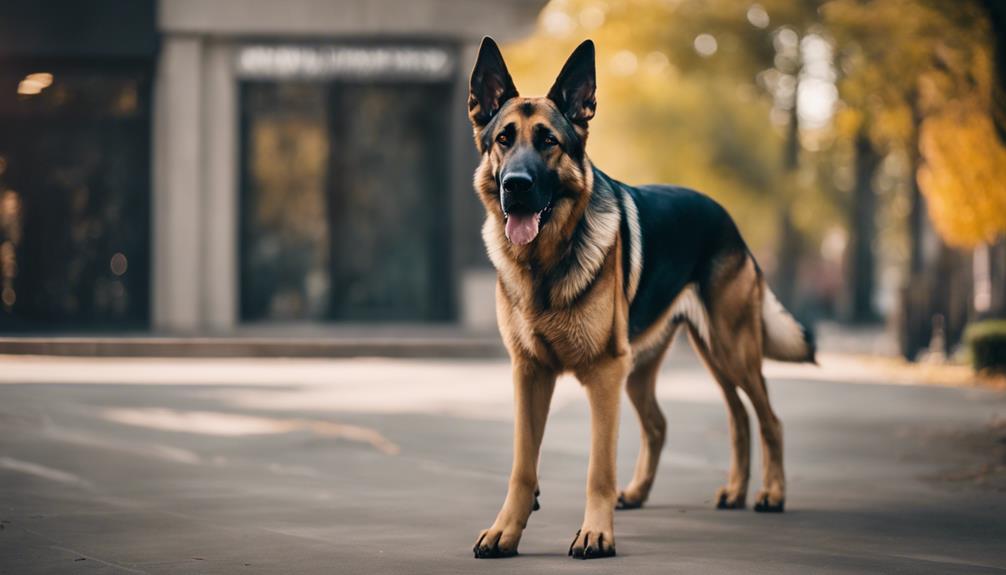🐾 Paw-some Partnership Alert! 🐾
As a pack of German Shepherd enthusiasts at MixGermanShepherd.com, we're always sniffing out the best products for our furry friends. Guess what? When you fetch something from Amazon through our links, we earn a little treat! 🦴
You've heard of mixed breeds before, but have you ever considered the exceptional blend that is the German Shepherd Great Dane mix? Imagine the intelligence of a German Shepherd and the grandeur of a Great Dane merging into one remarkable companion. But that's just the beginning. The unique traits and characteristics they possess go beyond mere appearance, offering a blend of qualities that set them apart from other breeds. Curious to discover more about what makes these hybrids truly one-of-a-kind?
Key Takeaways
- Unique blend of hunting and herding backgrounds in a newer hybrid
- Varied coat colors and sizes ranging from 28-34 inches
- Loyalty, intelligence, and affectionate nature with protective instincts
- High energy levels, trainability, and versatility for active families
Origin and Background of the Breed
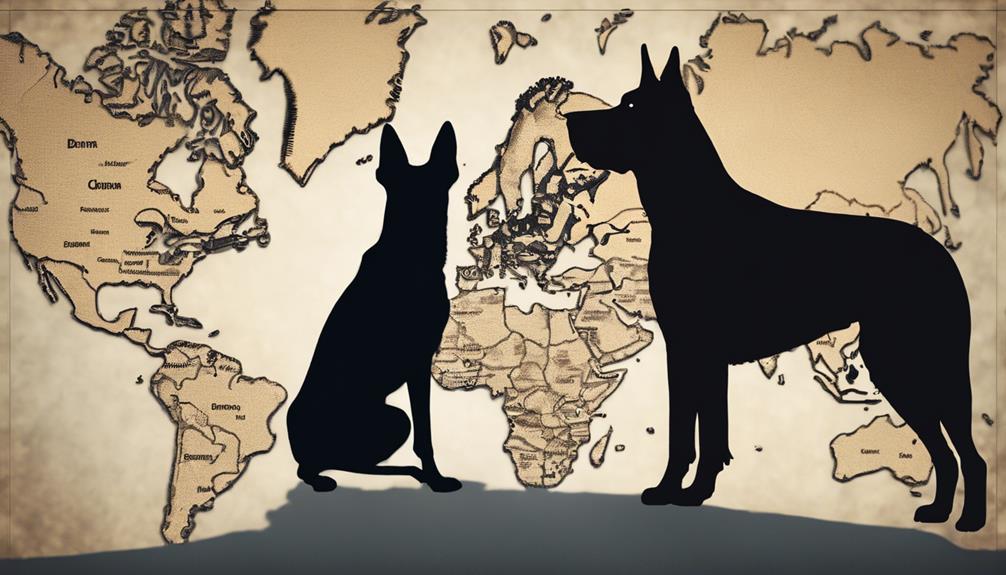
The German Shepherd Great Dane mix breed has an intriguing origin and background that sheds light on its unique characteristics and temperament. This newer intentionally bred hybrid dog combines the hunting history of Great Danes with the herding background of German Shepherds. Originating in the past 10-20 years, this mix showcases a blend of traits from both parent breeds, resulting in a fascinating combination.
Typically large in size, ranging from 28-34 inches tall and weighing between 90 to 180 pounds, the German Shepherd Great Dane mix reflects the size of both German Shepherds and Great Danes. Its appearance can vary, but it generally exhibits a muscular build with features inherited from both iconic parent breeds. Common coat colors seen in this mix include black, gray, fawn, brown, blue, brindle, and merle, highlighting the diverse nature of both parent breeds.
This blend of hunting and herding backgrounds, coupled with the large size and diverse appearance, contributes to the unique temperament and characteristics of the German Shepherd Great Dane mix. Understanding its origin and background provides valuable insight into the distinct qualities this hybrid dog possesses, making it a compelling choice for those seeking a companion with a blend of traits from two beloved breeds.
Unique Physical Characteristics and Size
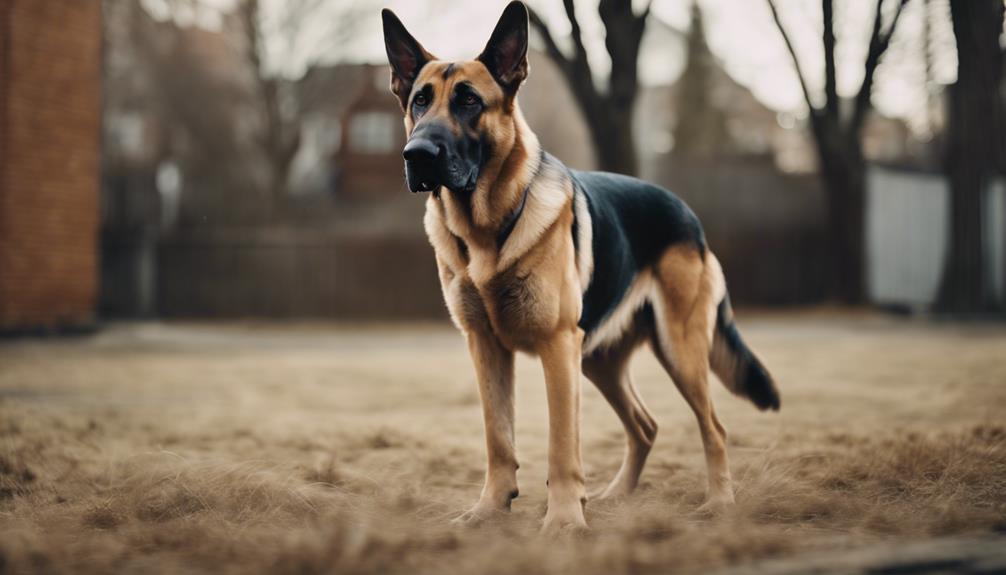
When considering the unique physical characteristics and size of the German Shepherd Great Dane Mix, one immediately notices the impressive stature and muscular build that often define this distinctive breed blend. This mix breed can range in size, with heights typically reaching between 28-30 inches, showcasing a large and imposing presence. In terms of weight, they can weigh anywhere from 65 to 130 pounds, displaying a significant range of sizes within the breed.
The physical characteristics of the German Shepherd Great Dane Mix are a blend of traits inherited from both parent breeds. They commonly exhibit a muscular build and strong features, reflecting the power and athleticism of their lineage. Additionally, the coat colors of these mixes can vary, encompassing a spectrum of hues from dark tones to lighter shades, a testament to the diversity within the breed.
With their unique appearance and size, the German Shepherd Great Dane Mix stands out as a striking combination of two iconic breeds. Their blend of physical attributes contributes to their distinctiveness, making them not only visually impressive but also physically formidable.
Blend of Temperaments and Personalities
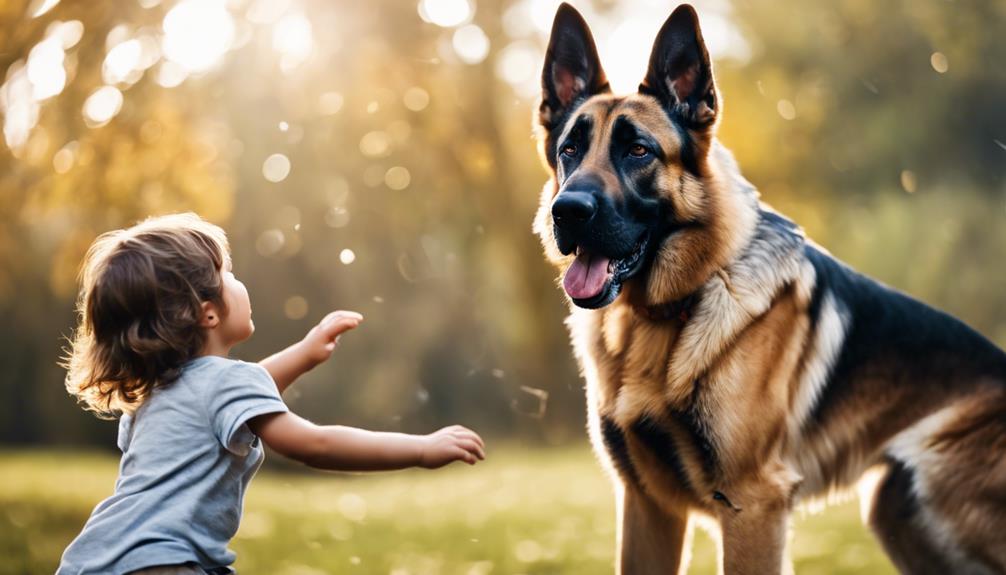
Demonstrating a harmonious blend of loyalty and sociability, the German Shepherd Great Dane Mix embodies a unique fusion of temperaments and personalities. This mix breed combines the loyalty and intelligence of the German Shepherd with the gentle and affectionate nature of the Great Dane. They exhibit a blend of protective instincts from the German Shepherd and the social and friendly demeanor of the Great Dane. Known for being highly adaptable and social, they can form strong bonds with their families and other animals. The German Shepherd Great Dane Mix requires attention, mental stimulation, and room to roam to thrive and stay happy. Their unique blend of temperaments makes them versatile companions suitable for various living environments.
| Positive Traits | Description |
|---|---|
| Loyalty | They are fiercely loyal to their families and will go to great lengths to protect them. |
| Intelligence | Known for their sharp minds, they are quick learners and excel in training exercises. |
| Gentle & Affectionate | Despite their size, they are gentle giants, often displaying affection towards their owners. |
| Protective Instincts | Possessing a natural guarding instinct, they can be excellent watchdogs when needed. |
| Social & Adaptable | They are social butterflies and adapt well to various social situations and environments. |
| Strong Bonds | Forming strong emotional connections, they thrive on building lasting bonds with their loved ones. |
Health Considerations for the Mix Breed
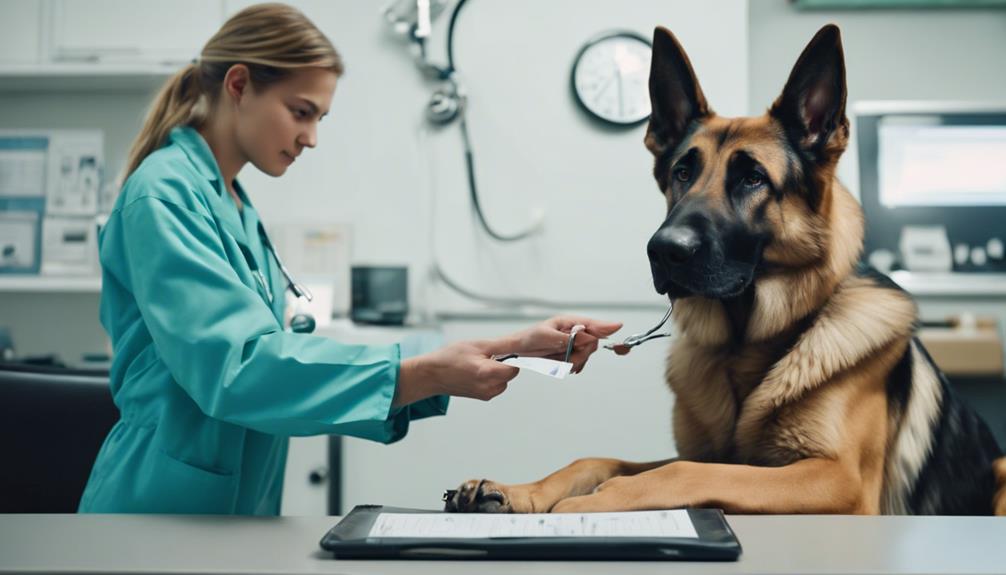
To ensure the well-being of your German Shepherd Great Dane Mix, it is essential to be aware of the potential health considerations that may affect this unique breed. Understanding the health issues commonly associated with this mix can help you take preventive measures and ensure a better quality of life for your furry companion.
Health Considerations for the Mix Breed:
- Genetic Health Issues: The German Shepherd-Great Dane mix can inherit genetic health problems from both parent breeds. Regular screenings and early detection can help manage these issues effectively.
- Bloat: Also known as gastric dilatation-volvulus, bloat is a serious condition that can affect this mix breed, especially if they eat too quickly. Immediate attention is crucial if you notice symptoms like a swollen abdomen, restlessness, or unproductive retching.
- Hip Dysplasia and Allergies: Hip dysplasia, a common issue in both German Shepherds and Great Danes, can impact the mobility and comfort of your mix breed. Additionally, allergies may manifest as skin irritation or gastrointestinal problems. Monitoring your dog for signs of discomfort and consulting with a vet can help manage these conditions effectively.
Special Care and Maintenance Needs
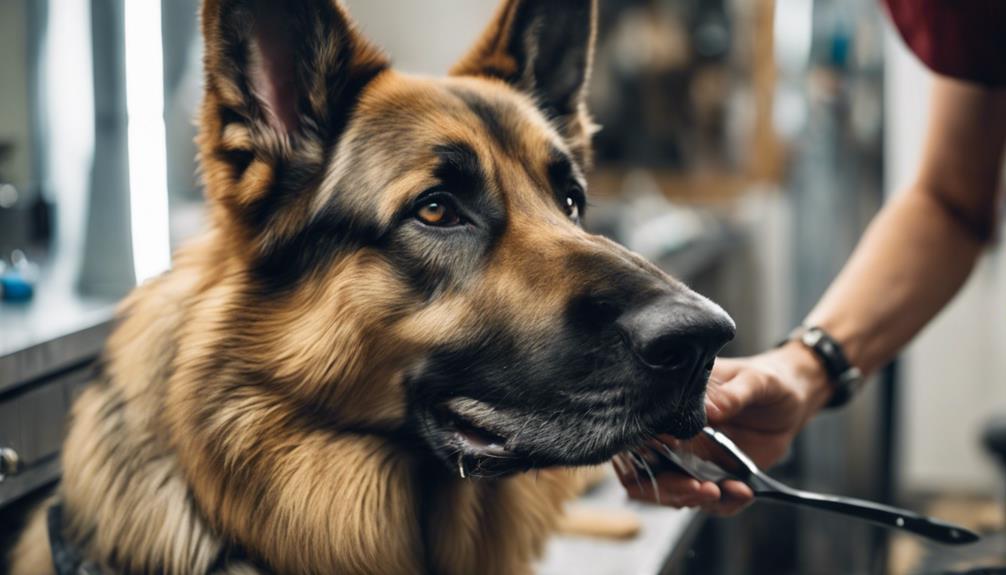
For optimal well-being and longevity of your German Shepherd Great Dane Mix, it is imperative to address their special care and maintenance needs with diligence. Due to their moderate shedding and coat maintenance requirements, regular grooming sessions are essential to keep their coat in top condition. Monitoring their diet and practicing portion control is crucial to prevent obesity and related health issues, ensuring they maintain a healthy weight.
Routine vet check-ups are necessary to catch any potential genetic health problems early on, such as hip dysplasia, common in both parent breeds. Providing mental stimulation and regular exercise is key to preventing boredom and destructive behaviors. Their energy levels are high, so engaging activities are important to keep them physically and mentally satisfied.
Given their large size, creating a safe and spacious environment is vital for their well-being. Ensure they have enough room to move around comfortably. Keeping them active with daily exercise not only helps maintain their physical health but also contributes to their mental well-being.
Training Tips for Great Shepherd Dogs
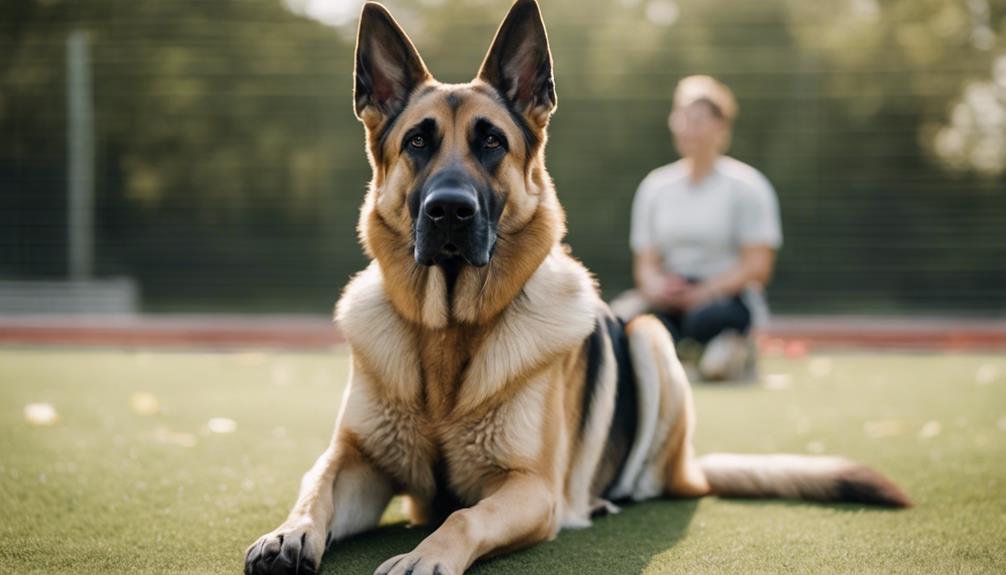
To effectively train your Great Shepherd dog, utilize their high intelligence and quick learning abilities to establish a strong foundation of desired behaviors. These dogs respond well to positive reinforcement training methods, making it essential to reward good behavior to encourage obedience and learning. Early socialization plays a crucial role in shaping your Great Shepherd's behavior, helping them become well-adjusted and comfortable around different people and pets from an early age.
Training Tips for Great Shepherd Dogs:
- Positive Reinforcement: Use rewards like treats, praise, or playtime to reinforce good behavior and commands. Avoid punishment-based methods as they can be counterproductive with this breed.
- Early Socialization: Introduce your Great Shepherd to various environments, people, and animals to help them develop into well-rounded and sociable dogs.
- Mental Stimulation: Keep your Great Shepherd engaged with challenging toys, interactive games, and obedience training to prevent boredom and channel their intelligence positively.
Given their protective instinct inherited from their German Shepherd parent, Great Shepherds make excellent watchdogs. Consistent training, early socialization, and mental stimulation are key elements in ensuring that your Great Shepherd thrives as a well-behaved, intelligent, and loyal companion.
Compatibility With Families and Homes
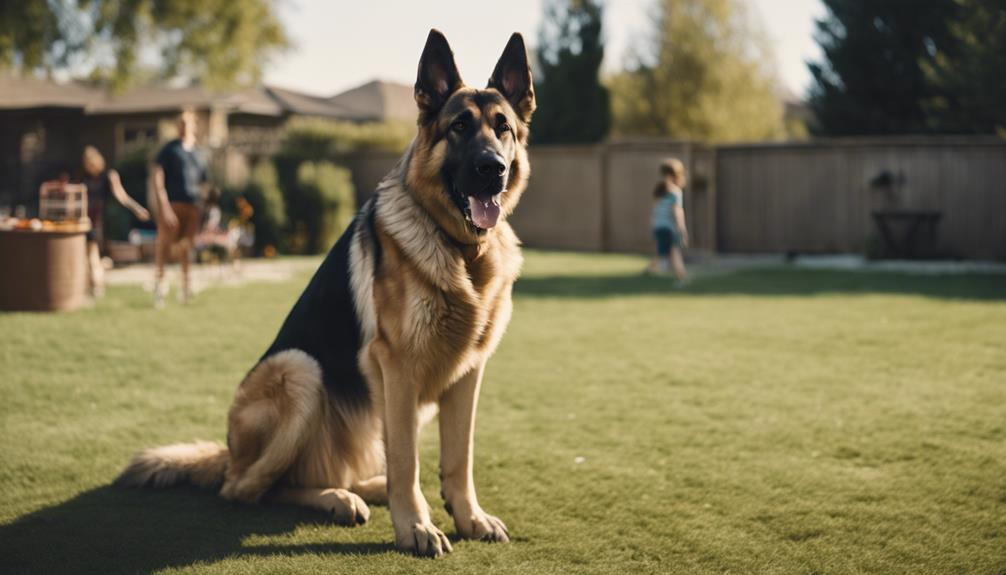
If you're considering adding a German Shepherd Great Dane Mix to your family, you'll appreciate their family-friendly temperament traits and their need for an ideal living space that allows for ample movement and play. These dogs thrive in homes with yards or access to outdoor areas, making them well-suited for active families looking for a loyal and social companion. Their adaptability and protective nature also contribute to their compatibility with various living environments, ensuring they can be a watchful and loving presence in your home.
Family-Friendly Temperament Traits
With their gentle and affectionate temperament, the German Shepherd Great Dane Mix is renowned for their family-friendly nature, making them ideal companions for households seeking a loyal and protective pet. Here are three key traits that contribute to their suitability for families:
- Loyal and Protective Nature: This mix breed is known for its loyalty towards its family members and its innate protective instincts, making them excellent guard dogs that will watch over and care for their loved ones.
- High Energy and Intelligence: Their high energy levels and intelligence make them well-suited for active families who can provide the necessary exercise and mental stimulation these dogs require to thrive.
- Versatile and Trainable: Their versatility and trainability allow them to adapt to various living situations, environments, and family dynamics, ensuring they can integrate seamlessly into different households.
Ideal Living Space Requirements
Considering the German Shepherd Great Dane Mix's need for space and activity, it's essential to ensure that your living environment can accommodate their size and energy levels for their well-being. This unique breed is ideally suited for active families who can provide regular exercise and mental stimulation. Due to their large size and energy levels, apartment living may not be suitable for the German Shepherd Great Dane Mix, making them more compatible with larger households. A fenced yard is highly beneficial for this breed to allow for physical activity and playtime. Ensuring compatibility with families and homes that can offer ample space, exercise, and mental engagement is crucial for the well-being of this distinctive mix.
| Ideal Living Space Requirements | Description |
|---|---|
| Size of living space | Spacious, large area |
| Suitability for apartments | Not recommended |
| Need for fenced yard | Beneficial for physical activity |
| Ideal for active families | Regular exercise and stimulation |
| Compatibility with larger households | Well-suited for such environments |
Frequently Asked Questions
What Is a Great Dane German Shepherd Mix Called?
A Great Dane German Shepherd mix is commonly referred to as a Dane Shepherd. This mixed breed combines the traits of the Great Dane and German Shepherd. It exhibits a range of characteristics inherited from both parent breeds.
What Do German Shepherd and Great Dane Have in Common?
German Shepherds and Great Danes share similar temperament differences, exercise requirements, grooming needs, health concerns, training challenges, socialization tips, energy levels, playtime activities, feeding requirements, and behavioral traits. Understanding these commonalities can help you care for either breed effectively.
What Makes a Great Dane Unique?
A Great Dane is a gentle giant known for its tall stature, big heart, protective instincts, playful nature, intelligence, family-friendly attitude, athletic build, and loyalty. A Great Dane mix inherits these qualities, making them exceptional companions.
How Big Will a Great Dane Shepherd Mix Get?
You can expect a Great Dane Shepherd mix to reach weights between 65-130 pounds as they grow. The size can vary based on genetics. They require ample exercise, regular grooming, consistent training, and vigilant health monitoring.
Conclusion
So, there you have it – the German Shepherd Great Dane mix, a truly unique and special breed with a perfect blend of intelligence and loyalty. Remember, they may be big in size, but they have an even bigger heart. Just make sure you have enough space and time to dedicate to this wonderful companion, because they'll definitely keep you on your toes with their playful antics and watchful eyes. Isn't it ironic how such a gentle giant can also be a fierce protector?
